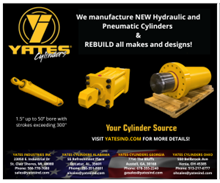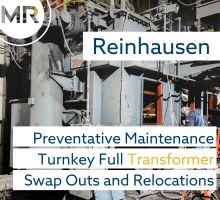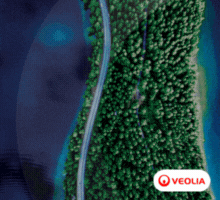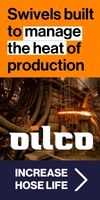ARENA Awards Calix AU$44.9 Million Grant For Green Iron Demonstration Plant
07/28/2025 - Calix announced it has received an AU$44.9 million grant from the Australian Renewable Energy Agency (ARENA) to build a zero-emissions steel technology (ZESTY) green iron demonstration plant.
The ZESTY demonstration plant project aims to produce about 30,000 metric tons annually of hydrogren direct reduced iron (H2-DRI) or hot briquetted iron (HBI). It will use a combination of electric heating and hydrogen reduction to produce green iron and eventually steel.
“What makes ZESTY so compelling is its potential to dramatically lower the amount of hydrogen required to convert iron ore into pure iron,” said Darren Miller, chief executive officer of ARENA.
The project also aims to deliver pre-front-end engineering design (Pre-FEED) and front-end engineering design (FEED) studies for a commercial-scale ZESTY plant, the company said. It has already undergone extensive pilot-scale testing with good metallization results.
In over 130 test runs using nine different Australian ores covering a range of grades and particle sizes, most achieved the level of metallization suitable for downstream use in either an electric smelting furnace (ESF) or blast furnace. Several of the tests’ metallization levels were sufficient for feed into an electric arc furnace (EAF).
“Following successful pilot-scale testing and global recognition for ZESTY from the Net-Zero Industries Award at COP29 and the Decarb Connect Next Gen Award over the past 12 months, this next milestone continues to mark our progress in realizing ZESTY’s potential,” said Phil Hodgson, chief executive officer and managing director of Calix.
ZESTY hopes to provide lowest cost pathways to green iron and steel in four ways: enabling flexible operations compatible with various renewable energy sources; lowering hydrogen use to 54 kg per metric ton of iron; removing the need for ore pelletization; and enabling use of fines and lower-grade ores.
“ZESTY’s compatibility with multiple ore types and grades will make it an ideal, multi-user platform facility to test and develop green iron and steel pathways. Its potential to minimize hydrogen consumption, avoid palletization, and operate flexibly on low-cost electricity can enable it to do so in the most cost-effective way possible,” said Chris Ormston, general manager of sustainable processing at Calix.
The demonstration project, for which the location remains undisclosed, will now begin with detailed design engineering. A final investment decision is targeted for 2026. Subject to matched funding being secured, procurement and construction is targeted for 2026 followed by commissioning and operations commencing in 2028.
Once commissioned, the demonstration plant will be used to test a wide range of iron ores with various mineralogy, grades and compositions, the company said.
“What makes ZESTY so compelling is its potential to dramatically lower the amount of hydrogen required to convert iron ore into pure iron,” said Darren Miller, chief executive officer of ARENA.
The project also aims to deliver pre-front-end engineering design (Pre-FEED) and front-end engineering design (FEED) studies for a commercial-scale ZESTY plant, the company said. It has already undergone extensive pilot-scale testing with good metallization results.
In over 130 test runs using nine different Australian ores covering a range of grades and particle sizes, most achieved the level of metallization suitable for downstream use in either an electric smelting furnace (ESF) or blast furnace. Several of the tests’ metallization levels were sufficient for feed into an electric arc furnace (EAF).
“Following successful pilot-scale testing and global recognition for ZESTY from the Net-Zero Industries Award at COP29 and the Decarb Connect Next Gen Award over the past 12 months, this next milestone continues to mark our progress in realizing ZESTY’s potential,” said Phil Hodgson, chief executive officer and managing director of Calix.
ZESTY hopes to provide lowest cost pathways to green iron and steel in four ways: enabling flexible operations compatible with various renewable energy sources; lowering hydrogen use to 54 kg per metric ton of iron; removing the need for ore pelletization; and enabling use of fines and lower-grade ores.
“ZESTY’s compatibility with multiple ore types and grades will make it an ideal, multi-user platform facility to test and develop green iron and steel pathways. Its potential to minimize hydrogen consumption, avoid palletization, and operate flexibly on low-cost electricity can enable it to do so in the most cost-effective way possible,” said Chris Ormston, general manager of sustainable processing at Calix.
The demonstration project, for which the location remains undisclosed, will now begin with detailed design engineering. A final investment decision is targeted for 2026. Subject to matched funding being secured, procurement and construction is targeted for 2026 followed by commissioning and operations commencing in 2028.
Once commissioned, the demonstration plant will be used to test a wide range of iron ores with various mineralogy, grades and compositions, the company said.



.jpg?lang=en-US&ext=.jpg)
.gif?width=220&height=200&mediaprotectionhash=374c6b9a31f2b2fbfc7937391034efb46fd57feba997b9ad2ae9a0bd3d48329d&ext=.gif)

.gif?width=100&height=200&mediaprotectionhash=e2d5b15d68f84f22038524be6c58e5268d67b7f44494b544e29a8d53c5b959ba&ext=.gif)
